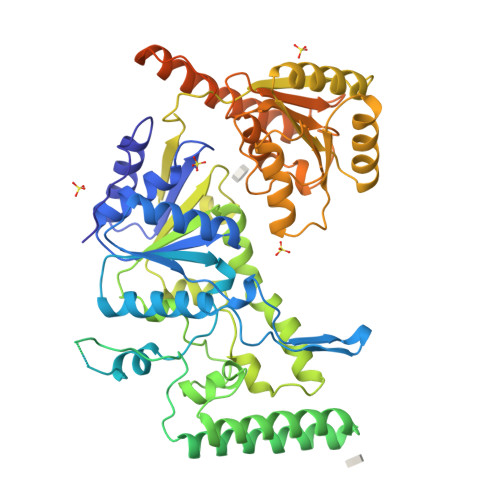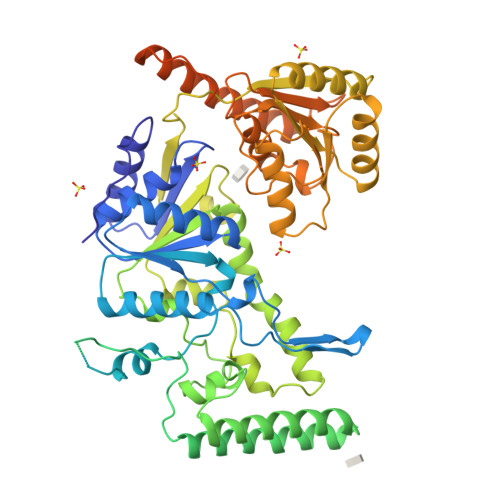Crystal structure of the DNA nucleotide excision repair enzyme UvrB from Thermus thermophilus.
Machius, M., Henry, L., Palnitkar, M., Deisenhofer, J.(1999) Proc Natl Acad Sci U S A 96: 11717-11722
- PubMed: 10518516
- DOI: https://doi.org/10.1073/pnas.96.21.11717
- Primary Citation of Related Structures:
1C4O - PubMed Abstract:
Nucleotide excision repair (NER) is the most important DNA-repair mechanism in living organisms. In prokaryotes, three enzymes forming the UvrABC system initiate NER of a variety of structurally different DNA lesions. UvrB, the central component of this system, is responsible for the ultimate DNA damage recognition and participates in the incision of the damaged DNA strand. The crystal structure of Thermus thermophilus UvrB reveals a core that is structurally similar to core regions found in helicases, where they constitute molecular motors. Additional domains implicated in binding to DNA and various components of the NER system are attached to this central core. The architecture and distribution of DNA binding sites suggest a possible model for the DNA damage recognition process.
Organizational Affiliation:
Howard Hughes Medical Institute, Department of Biochemistry, University of Texas Southwestern Medical Center at Dallas, 5323 Harry Hines Boulevard, Dallas, TX 75235-9050, USA.




















